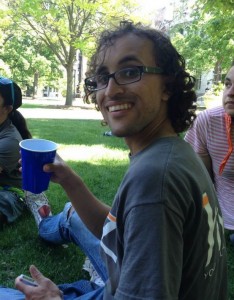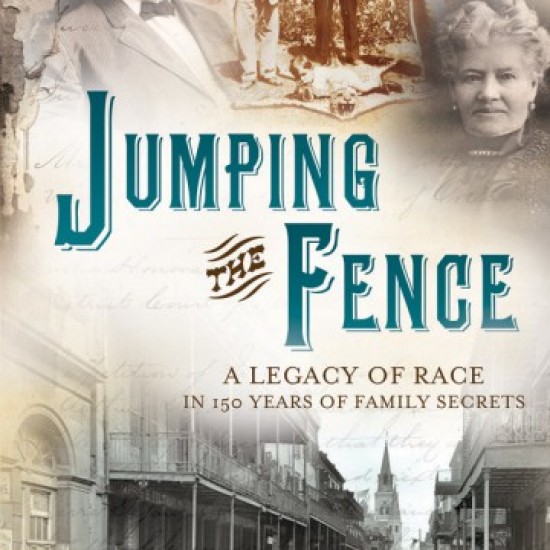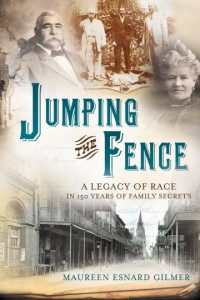Race-thinking has two distinct aspects: the real, and the conceptual. Both of these are important in the development of the racial politics of identity. These politics surround both what we know to be true about race (the real) and what we are taught corresponds to that reality (the conceptual). What these aspects have in common is their role as signifiers in the categorization of people both for the state and the individual. Stuart Hall suggested that the entire construction of race was an exercise in turning the body into a text, something that is neat and well defined, in order that we might better understand it[1]. Skin color, and the physical associations based on that color, become signifiers that we use to organize and categorize groups of people in a way that is convenient for a plurality of the population. If this idea is taken with some merit, then we can say that a whole series of problems in discussions of race are problems of language. When we argue about stereotypes, negative or positive, we are arguing about how accurately we have read people in the context of the state. The confirmation of stereotypes represents a successful unification of the real with the conceptual.
The need to categorize is not exclusive to race-thinking; it is how we make sense of information. Without classifications and groupings, we are left with a variety of data that have little meaning behind them. Yet, if we look at race-thinking as a series of signs within language, then the importance of categorization is open to another set of problems. These are problems of relative identity. The French philosopher, Jacques Derrida, perceived language as a series of signs that were ultimately relative[2]. Particular words gained their significance only when defined in relation with their antithesis: “open” only really means something when compared with “closed”, “up” with “down”, and so on. “White” and “Black” is another example of these antithetical pairs. A long history is associated with these colors, and their applications. As one example, Augustine in the 5th century CE used the concept of light—another synonym for white—and the fall from light to denote those who maintained piety, and those who fell into sin, respectively.
“White” and “Black” as historical terms gained power within the conceptual that has never been fully developed. This history is also what complicated issues that made the line between them less distinct. And here, Multi Racial identities become actively political. To have someone who physically embodied White and Black is to actively challenge not simply the hierarchy, but the categorizations themselves. This was the reasoning behind legal prohibitions of miscegenation, as well as social de-valuations of Multi Racial Subjects. As Frank Furedi noted, in ”How Sociology Imagined Mixed Race”: “The research agenda of the emerging race relations industry was dominated by the imperative of damage limitation”. This policy began with the interactions of the Americas with Europe, and continued up to policing commercials for Cheerios[3]. It relied on lines that could be imposed and enforced to the point that policing boundaries became subconscious. Edward Said’s process of Orientalizing the East is another way of formulating the creation of this category. Orientalism is a way of creating such conceptual categories, where lines are very clearly defined in the subconscious, although they may be difficult to articulate—we might recall Justice Stewart on pornography: “I shall not today attempt further to define the kinds of material I understand to be embraced with that shorthand description; and perhaps I could never succeed in intelligibly doing so. But I know it when I see it”.
The political power of these subjects, of course, has been subverted to serve the role of structural power. As Antonio Gramsci asserted, the culture of the powerful became the culture of the state. Those whose identities challenged this cultural form of hegemony were inevitably perceived as political. The scholar of the Classical World, or that of 18th century poetry is able to conceal political identity to her writings in a way that is never accessible to those whose histories were based on a past of permanent dislocation. We might say the “white” category has been established as default. As a result, those who study white areas cannot be said to be political—they seek to understand the history of our world. And yet, even structures have their politics. As Edward Said noted in Orientalism: “No one has ever devised a method for detaching the scholar from the circumstances of life, from the fact of his involvement (conscious or unconscious) with a class, a set of beliefs, a social position, or from the mere activity of being a member of a society”.
In this sense, the multi racial subject is paradoxically both political and apolitical. Within reality, her appearance is not enough signage to read her as belonging to the white or black category. However, her very existence is testimony to the long struggle at the periphery of such well-formulated categories. This means the mixed race identity is one that is always partially compromised: “What are you?” is less offensive for its depersonification and more for its historical erasure. Those who do not fit neatly in structured conceptions of race and culture do not belong, and need to be modified to fit with the worldview: “No, you can’t be Chinese!” the implication being that it violates some natural law of civilization.
What can we do about this problem? Our current solution, grounded in the empirical sense of what is feasible, suggests that it is merely a problem of experience. The whole debate about diversity is that experiencing the “real” aspects of people is enough to shift the “conception” of people[4]. There is no doubt that this must be part of the solution, however, it is not as simple as merging the boys and girls at a middle school dance. The beauty of ideologies is that they maintain their powers not simply in the real experiences of people, but also in how those people conceptually engage with categories through structures. As Arendt noted, part of the process of opinions turning into ideologies is this: “The appeal of both [in reference to history as an economic struggle of classes and as a natural fight of races] to large masses was so strong that they were able to enlist state support and establish themselves as official national doctrines”[5]. In short, factual blind spots that are tacitly endorsed by state action do not disappear through rectification. The larger ideological traces must be addressed as well.
I would like to show how a different approach to education is necessary, through my own experiences. While the origins of the problem in racial hegemony is similar to that of most minorities, there is still a unique encounter of the Multi Racial Subject as merging the expectations and identities of these two conceptual categories of “White” and “Black”. Just how fluid their assignment is can be seen in our own president, and his own struggle to fluctuate between seeming “Black” in some parts of his real struggle (encounters with police, for example) but also acknowledging his “Whiteness”. It is a microcosm of the multi-racial struggle on a whole, one whose solution is best presented in the words of Said: “All systems of education alas are still deeply, sometimes unconsciously, nationalistic. So I think we have to de-nationalize education and realize, and make it possible for people to understand that we live in a very complex and mixed world in which you can’t separate cultures and civilizations from each other but, in fact, history ought to be taught as the exchange and of course the clash of civilization”[6]. This process of nationalization includes a history by which we are invested in separating these categories, which cannot be so easily done in the context of the Multi Racial Subject.
I propose that my own experiences bear out to a more pressing issue—the socialization of racism. Children are aware of the racial boundaries that separate us, when they are a concern of those children’s realities. And they mirror the same sort of boundaries without consciously being aware of what they are doing. This is because they see the structures around them, and understand those structures to be models. A true humanities education is one in which the structures themselves become the subject of inquiry as much as any one particular subject. As a recent New York Op-Ed summarized: “Duncan said that Americans tended to be “ahistorical” — that is, we choose to forget the context of our past, perhaps as a way for a fractious nation of immigrants to get along.”[7] This context is essential, if we seriously seek to reform how race-thinking defines the worlds in which we inhabit.
A couple of warnings: one, these are my experiences. As such, I have little protection from the sort of critical cross-examination that is necessary for any sociological proposal. I don’t think of this as an answer—if I am lucky, it is the beginning of a question. The second is that, as I am a cisgender, heterosexual, male, several large aspects of identity are mostly put to the side. I don’t mean for them to be unimportant—rather, I have no serious experience being a minority in any of these camps, and would rather, like Foucault to the prisoners, “let them speak for themselves”. It is my belief each could write a narrative similar to my own, and those with multiple aspects could note the role of intersectionality in these debates.
[1] Stuart Hall, “Race as a Floating Signifier”: http://www.youtube.com/watch?v=bRk9MZvOd2c
[2] As an informal guide, the Wiki page on Deconstruction is helpful: http://en.wikipedia.org/wiki/Deconstruction#From_diff.C3.A9rance_to_deconstruction
[3] For this particular commercial: http://www.youtube.com/watch?v=kYofm5d5Xdw . The comments had to be disabled.
[4] http://www.acenet.edu/news-room/Documents/BoardDiversityStatement-June2012.pdf . This statement is demonstrative of what is called “positivist” tendencies about diversity—its value is only determined by what it produces.
[5] Hannah Arendt, The Origins of Totalitarianism, published initially by Jovanovich in 1973, available here: https://ia600509.us.archive.org/7/items/originsoftotalit00aren/originsoftotalit00aren_bw.pdf .
[6] This was a review of Samuel Huntington’s Clash of Civilizations, given by Edward Said in a lecture. For the transcript: http://www.mediaed.org/assets/products/404/transcript_404.pdf . For the lecture itself: http://www.youtube.com/watch?v=aPS-pONiEG8 .
[7] Timothy Egan, “Lost in the Past” http://www.nytimes.com/2014/05/23/opinion/egan-lost-in-the-past.html?hp&rref=opinion&_r=1 .
By: July 2014 Guest Blogger- Marley-Vincent Lindsey
Marley-Vincent Lindsey is a freelance writer and independent researcher located in New York. He recently graduated from the University of Chicago with a degree in history and is primarily interested in 16th century Colonial Spain, the influence of Christianity on colonial institutions, subaltern studies and postcolonial theory and the relationship between digital media and history. He will be presenting at the Sixth Annual Conference on Power and Struggle hosted by the University of Alabama, and is publishing a paper entitled “The Politics of Pokémon: Socialized Gaming, Religious Themes and the Construction of Communal Narratives” in the forthcoming volume of Heidelberg Journal of Religions on the Internet. When he’s not on the academic grind, he’s probably playing Starcraft and other related strategy games, skating or thinking about contingency plans for the zombie apocalypse. He can be contacted via email (mvlindsey92@gmail.com) or through his notebook-blog (mvlindsey.wordpress.com). He also really likes cats.
(due to an abundance of spam, we’ve had to turn off comments here, but please head over to our Facebook page – we’d love to hear and share your thoughts there! facebook.com/MixedRootsStories)



